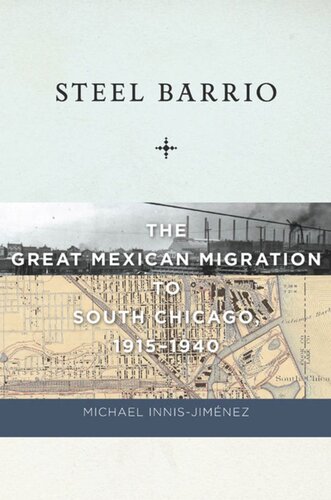

Most ebook files are in PDF format, so you can easily read them using various software such as Foxit Reader or directly on the Google Chrome browser.
Some ebook files are released by publishers in other formats such as .awz, .mobi, .epub, .fb2, etc. You may need to install specific software to read these formats on mobile/PC, such as Calibre.
Please read the tutorial at this link: https://ebookbell.com/faq
We offer FREE conversion to the popular formats you request; however, this may take some time. Therefore, right after payment, please email us, and we will try to provide the service as quickly as possible.
For some exceptional file formats or broken links (if any), please refrain from opening any disputes. Instead, email us first, and we will try to assist within a maximum of 6 hours.
EbookBell Team

5.0
38 reviewsSince the early twentieth century, thousands of Mexican Americans have lived, worked, and formed communities in Chicago’s steel mill neighborhoods. Drawing on individual stories and oral histories, Michael Innis-Jiménez tells the story of a vibrant, active community that continues to play a central role in American politics and society.
Examining how the fortunes of Mexicans in South Chicago were linked to the environment they helped to build, Steel Barrio offers new insights into how and why Mexican Americans created community. This book investigates the years between the World Wars, the period that witnessed the first, massive influx of Mexicans into Chicago. South Chicago Mexicans lived in a neighborhood whose literal and figurative boundaries were defined by steel mills, which dominated economic life for Mexican immigrants. Yet while the mills provided jobs for Mexican men, they were neither the center of community life nor the source of collective identity. Steel Barrio argues that the Mexican immigrant and Mexican American men and women who came to South Chicago created physical and imagined community not only to defend against the ever-present social, political, and economic harassment and discrimination, but to grow in a foreign, polluted environment.
Steel Barrio reconstructs the everyday strategies the working-class Mexican American community adopted to survive in areas from labor to sports to activism. This book links a particular community in South Chicago to broader issues in twentieth-century U.S. history, including race and labor, urban immigration, and the segregation of cities.